4.3: Alternative Media and Processes
- Page ID
- 156870
Overview
- Alternative media break down traditional boundaries between art and life
- In alternative media actions and ideas more important rather than a physical product
- Alternative media can be interactive. For example; performance art sometimes requires audience participation.
- Alternative media often incorporate more than one type of medium; categorization of artworks becomes complicated
Spotlight Artist: Cai Guo-Qiang
- Cai Guo-Qiang was born in 1957 in Quanzhou City, Fujian Province, China, and lives and works in New York.
- He explored the properties of gunpowder in his drawings, leading to the development of his signature explosion events.
- These projects, while poetic and ambitious at their core, aim to establish an exchange between viewers and the larger universe.
- For his work, Cai draws on a wide variety of materials, symbols, narratives, and traditions: elements of feng shui, Chinese medicine and philosophy, images of dragons and tigers, roller coasters, computers, vending machines, and gunpowder. 8
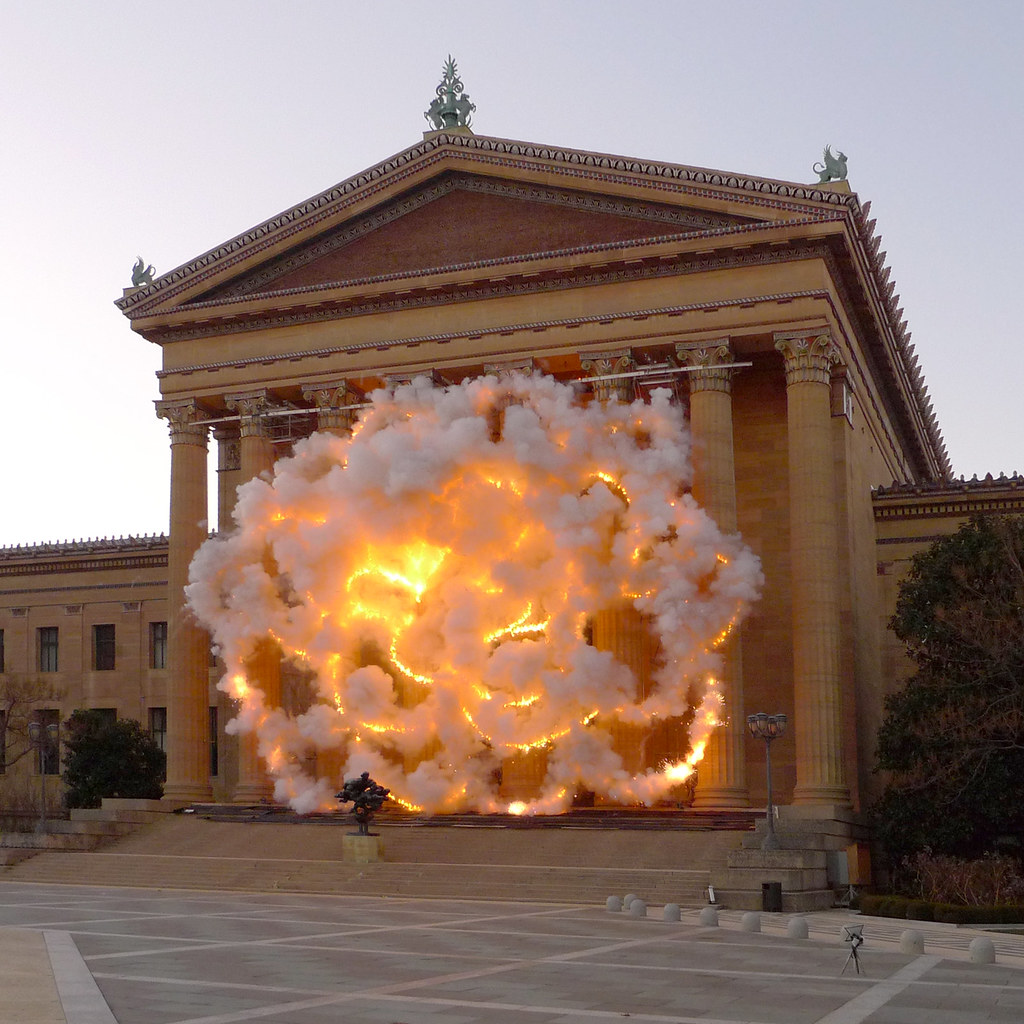
"Cai Guo-Qiang Fallen Blossoms" by chrisstorb is licensed under CC BY-NC-ND 2.0.
Conceptual Art
- Conceptual art is art for which the idea (or concept) behind the work is more important than the finished art object.
- It emerged as an art movement in the 1960s and the term usually refers to art made from the mid-1960s to the mid-1970s.
- Conceptual art can be – and can look like – almost anything. This is because, unlike a painter or sculptor who will think about how best they can express their idea using paint or sculptural materials and techniques, a conceptual artist uses whatever materials and whatever form is most appropriate to putting their idea across – this could be anything from a performance to a written description. 1
Marcel Duchamp
- Conceptual art is influenced by the Dada movement and Marcel Duchamp’s readymades. We can call Duchamp the father of Conceptual Art.
- The term readymade was first used by French artist Marcel Duchamp to describe the works of art he made from manufactured objects. It has since often been applied more generally to artworks by other artists made in this way 4.
- The choice of object is itself a creative act. By canceling the ‘useful’ function of an object, it becomes art.
- The presentation and addition of a title to the object have given it ‘a new thought’, a new meaning. 5
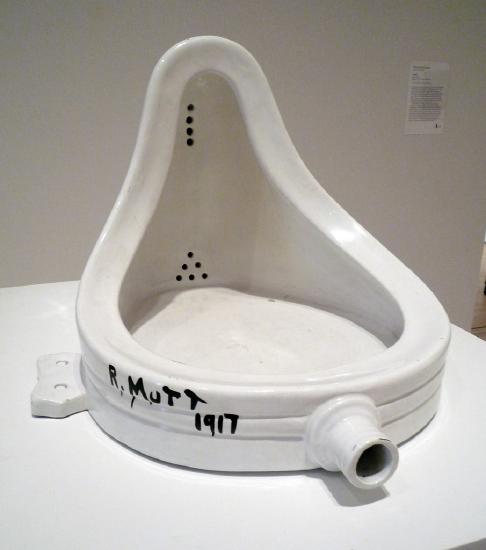
Marcel Duchamp, Fountain, 1917. Replica (original lost). Porcelain urinal, 12 × 15 × 18”, Philadelphia Museum of Art, Louise and Walter Arensberg Collection. "Marcel Duchamp, Fountain" by profzucker is licensed under CC BY-NC-SA 2.0.
Joseph Kosuth
- Joseph Kosuth, one of the pioneers of Conceptual art and installation art, has initiated language-based works and appropriation strategies since the 1960s. His work has consistently explored the production and role of language and meaning within art. 2
- In Joseph Kosuth's work, you see a chair sits alongside a photograph of a chair and a dictionary definition of the word chair. Perhaps all three are chairs, or codes for one: a visual code, a verbal code, and a code in the language of objects, that is, a chair of wood. 3
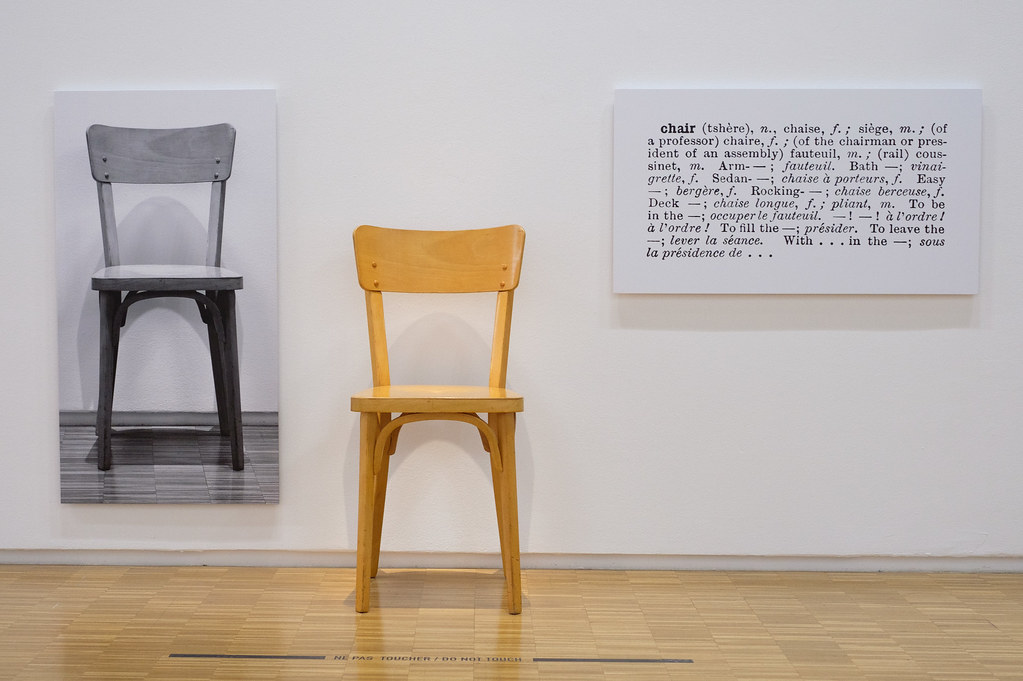
Joseph Kosuth.One and Three Chairs. 1965. "'One and Three Chairs' by Joseph Kosuth" by ToastyKen is licensed under CC BY-NC 2.0.
Yoko Ono
- Yoko Ono (b. 1933) is a Japanese-born American artist and musician. Ono has been making conceptual works since the 1960s
- The Wish Trees were inspired by the Japanese practice of tying prayers to a tree
- This piece relies on the interaction and participation of the viewer. Instructs the viewer to make a wish and tie it to the tree
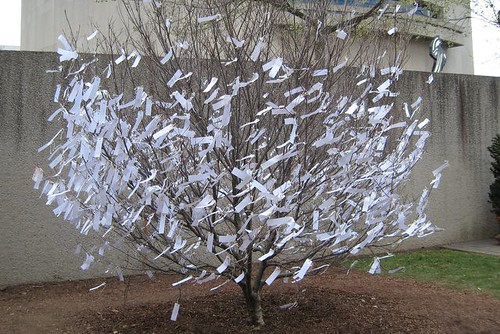
Yoko Ono, “Wish Tree for Washington D.C.” 2007. Click here to see more images https://hirshhorn.si.edu/explore/wish-tree-washington/. "Yoko Ono wish tree" by Andifeelfine is licensed under CC BY-NC-ND 2.0.
Performance Art
- In the 1960s and 1970s, artists explored theatrical actions or performances
- Performance art is artworks that are created through actions performed by the artist or other participants, which may be live or recorded, spontaneous or scripted
- The body is the main medium of the artwork.
- Unlike traditional theater, there is rarely an identifiable story.
Marina Abramovic
- Marina Abramovic is known for performances of extreme bodily endurance
- Every day for three months she sat quietly at a table in the MoMA, NYC
- Visitors sat—one at a time, for as long as they wished —in the opposite chair
- Created a silent “energy dialogue”

Marina Abramović, The Artist Is Present, Performance, 3 months. MoMA, New York, 2010. "Marina Abramović" by somethingstartedcrazy is licensed under CC BY-NC-SA 2.0.
Yoko Ono
- In Cut Piece—one of Yoko Ono’s early performance works. The artist sat alone on a stage, dressed in her best suit, with a pair of scissors in front of her.
- The audience had been instructed that they could take turns approaching her and use the scissors to cut off a small piece of her clothing, which was theirs to keep.
- Some people approached hesitantly, cutting a small square of fabric from her sleeve or the hem of her skirt. Others came boldly, snipping away the front of her blouse or the straps of her bra.
- Ono remained motionless and expressionless throughout, until, at her discretion, the performance ended. 6
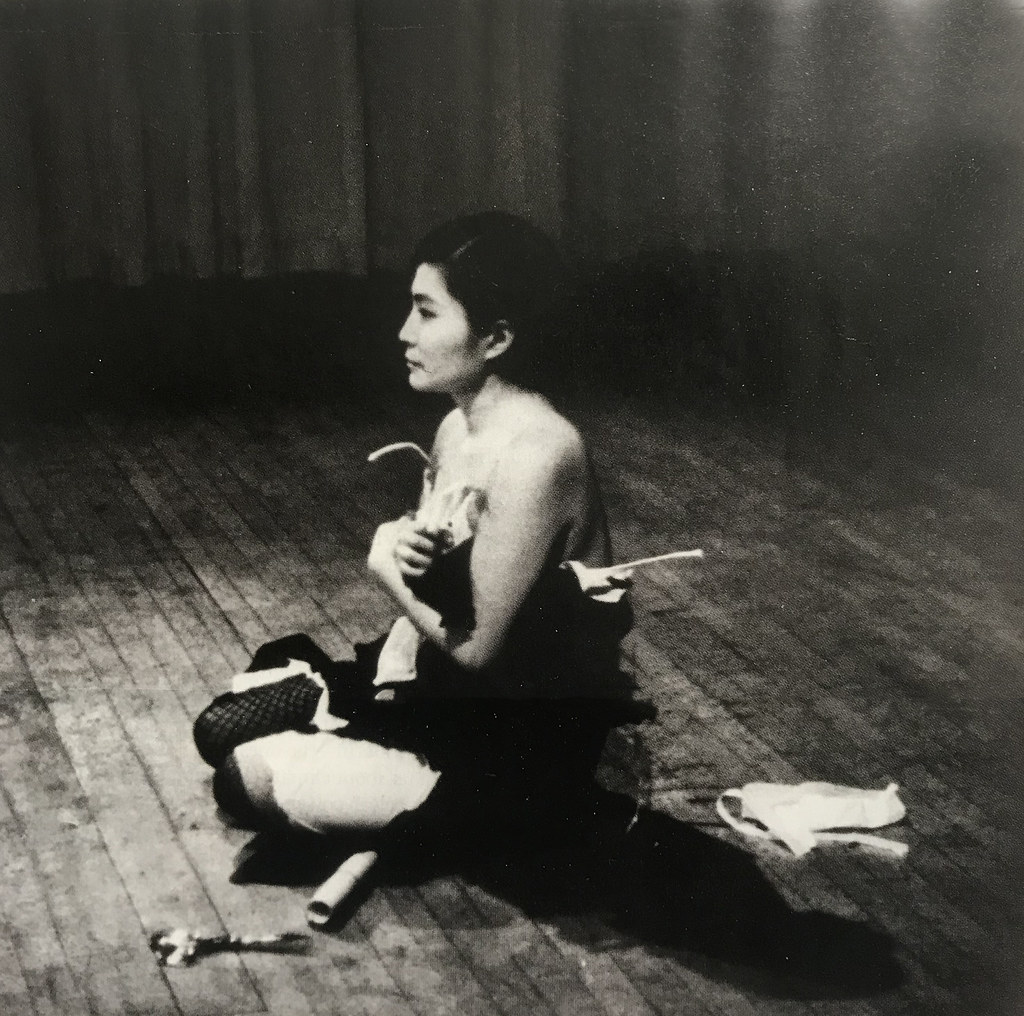
Yoko Ono. Cut Piece. (Japanese, born 1933). 1964. Performance. "Yoko Ono" by rocor is licensed under CC BY-NC 2.0.
Sources
- Tate, Art Term. Conceptual Art. https://www.tate.org.uk/art/art-term...conceptual-art
- Sean Kelly Gallery. Joseph Kosuth Biography. https://www.skny.com/artists/joseph-kosuth
- Museum of Modern Art. Joseph Kosuth. One and Three Chairs1965. www.moma.org/collection/works/81435
- Gompertz, Will. What Are You Looking At?: The Surprising, Shocking, and Sometimes Strange Story of 150 Years of Modern Art
- Tate, Art Term. Readymade. https://www.tate.org.uk/art/art-terms/r/readymade
- Museum of Modern Art. Moma Learning. www.moma.org/learn/moma_lear...ut-piece-1964/
- DeWitte, Debra J., Larmann, Ralph M.,and Shields, M. Kathryn. Gateways to Art: Understanding the Visual Arts, Third Edition. 2018
- Art 21 Artists. https://art21.org/artist/cai-guo-qiang/

